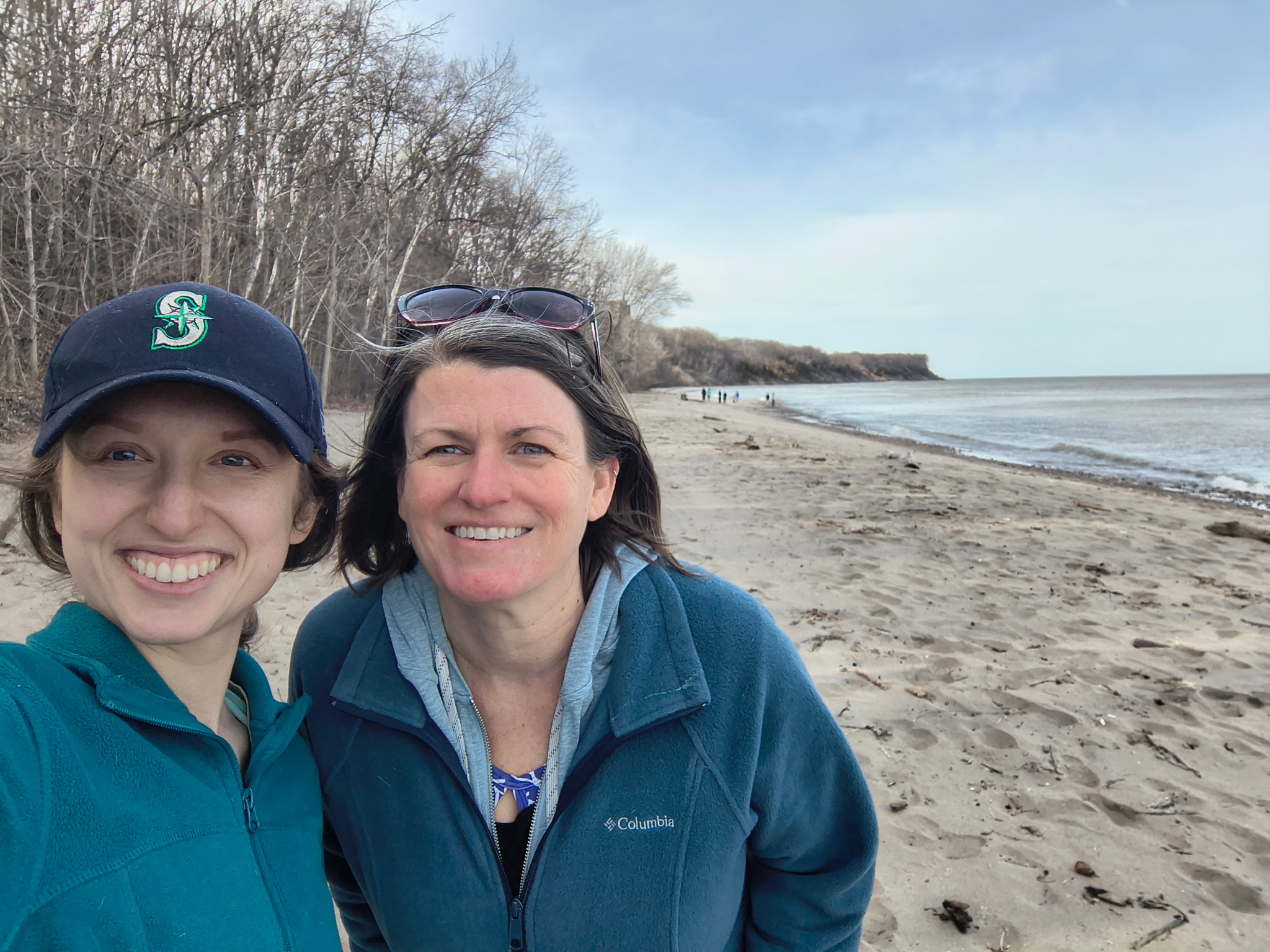Although 15 teachers went aboard the R/V Lake Guardian to learn last month, at least one group of them ended up helping the instructors who were there to teach them more about aquatic research, and they aided a Wisconsin Sea Grant project to boot.
The teachers sailed on the U.S. Environmental Protection Agency’s (U.S. EPA) research vessel from July 12-18 for firsthand experience about Lake Michigan’s unique ecology. The Lake Guardian left from and returned to Milwaukee with stops in several ports. After hearing presentations by the instructors, the teachers self-divided into three groups based on their interests.
One group was instructed by people associated with Sea Grant researcher Harvey Bootsma’s lab. Bootsma, associate professor with the University of Wisconsin-Milwaukee’s School of Freshwater Science, is constructing a computer model of the nearshore ecosystem in Lake Michigan. To do that, he needs sediment samples that will be examined for algae, phosphorus and other factors.
Enter Emily Tyner, Bootsma’s Ph.D. student, and Zac Driscoll, Bootma’s research specialist and lab manager. Their role on the ship was to conduct a sediment sampling program that fits with the context of the Sea Grant project and extends it to the offshore (deeper water) ecosystem in Lake Michigan as well.
The duo did not have easy going, however.
“We had a lot of problems with phosphorous contamination early on with our samples,” Driscoll said. The setback was depressing. “We were walking around just banging our heads against the wall, trying to figure out the problem,” he said. “The teachers asked what was wrong and helped us figure out the solution. I was really impressed by that.”
What was the problem? “Basically, everything,” Driscoll said. He and Tyner ended up going through each component of their technique and cleaning the equipment to get rid of any leftover phosphorus that might be clinging to it.
“The teachers were really good at thinking through problems, and they helped show us what a great learning experience that was,” said Tyner. “It was a great lesson for them to eventually show students, because sometimes, even for scientists who have done many experiments, things don’t always happen easily the first time.”
Tyner and Driscoll were also impressed by the teachers’ interest and dedication. “Sea Grant did a great job of selecting the teachers,” Tyner said. “They were so interested. We worked them hard and they were engaged the whole time.”
“I was just blown away,” said Driscoll. “There were times when I was processing samples back-to back over several hours. I would always have at least one teacher as an assistant. One stayed with me until midnight or 1 a.m. I kept telling her to go to bed, but she wanted to help.”
Water filtration rates by zebra and quagga mussels was another thing the duo looked at. In the end, Tyner said the teachers took this on as their own, setting up an experiment with two aquariums, each with water containing a lot of algae. The teachers added mussels to one tank and not the other, to see what would happen after 12 hours. Of course, the tanks with the mussels ended up with clearer water. “That’s something they could do back in their classrooms,” Tyner said. “I thought that was great initiative.”
The experience also gave Tyner and Driscoll practical experience regarding useful equipment aboard a research vessel. What turned out to be the most valuable? “A rubber mallet. It’s like the duct tape of the sea,” Tyner said. “It solved a lot of problems for us.”
Despite their initial frustrations and although they felt ragged by the end of the cruise, the two are willing to do something similar in the future. They both enjoyed the teaching and taking on a leadership role during the cruise. “It was all worth it,” said Driscoll. “I had such a great experience. I learned so much!”
The Shipboard and Shoreline Science workshop takes place on a different lake each year and is hosted by the Center for Great Lakes Literacy and coordinated by the Great Lakes Sea Grant Network and the U.S. EPA Great Lakes National Program Office. Funding comes from the Great Lakes Restoration Initiative.





